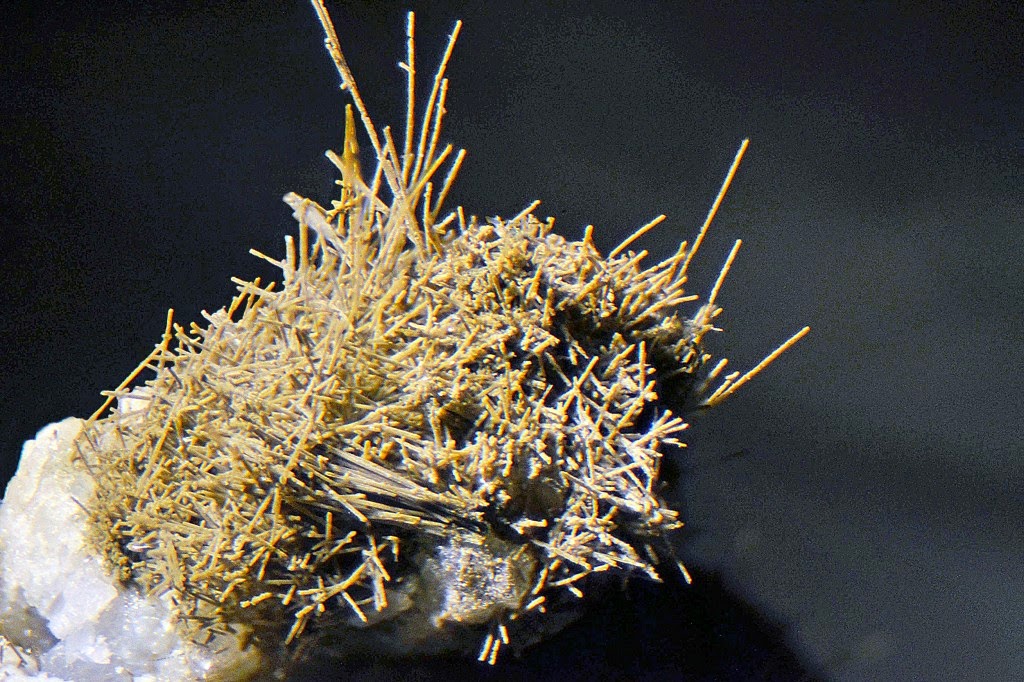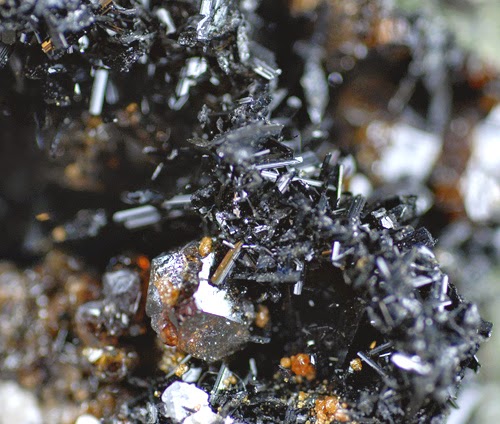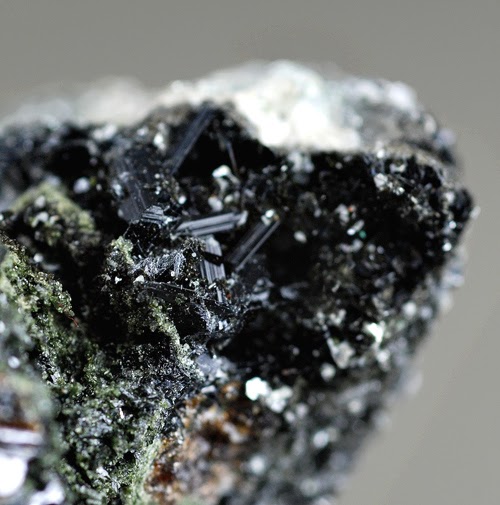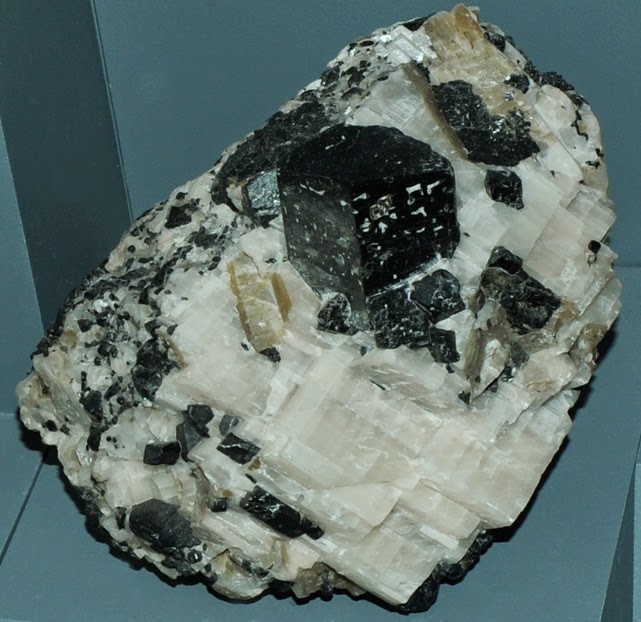
Chemical Formula: (Ca,Na)2–3(Mg,Fe,Al)5(Al,Si)8O22(OH,F)2
Hornblende is a complex inosilicate series of minerals (ferrohornblende – magnesiohornblende). It is not a recognized mineral in its own right, but the name is used as a general or field term, to refer to a dark amphibole.
Hornblende is an isomorphous mixture of three molecules; a calcium-iron-magnesium silicate, an aluminium-iron-magnesium silicate, and an iron-magnesium silicate.
The general formula can be given as (Ca,Na)2–3(Mg,Fe,Al)5(Al,Si)8O22(OH,F)2
Occurrence
Hornblende is a common constituent of many igneous and metamorphic rocks such as granite, syenite, diorite, gabbro, basalt, andesite, gneiss, and schist.
It is the principal mineral of amphibolites. Very dark brown to black hornblendes that contain titanium are ordinarily called basaltic hornblende, from the fact that they are usually a constituent of basalt and related rocks. Hornblende alters easily to chlorite and epidote.
A rare variety of hornblende contains less than 5% of iron oxide, is gray to white in color, and named edenite, from its locality in Edenville, Orange County, New York.
Other minerals in the hornblende series include:
- pargasite
- hastingsite
- tschermakite
Physical Properties
Color: black to dark green.
Luster: vitreous to dull.
Transparency: Crystals are generally opaque but thin crystals or exceptional specimens can be translucent.
Crystal System : Monoclinic; 2/m
Cleavage : imperfect in two directions at 56 and 124 degrees.
Fracture : uneven.
Hardness : 5 – 6.
Specific Gravity : approximately 2.9 – 3.4 (somewhat above average for translucent minerals)
Streak : brown to gray.
Photos :














